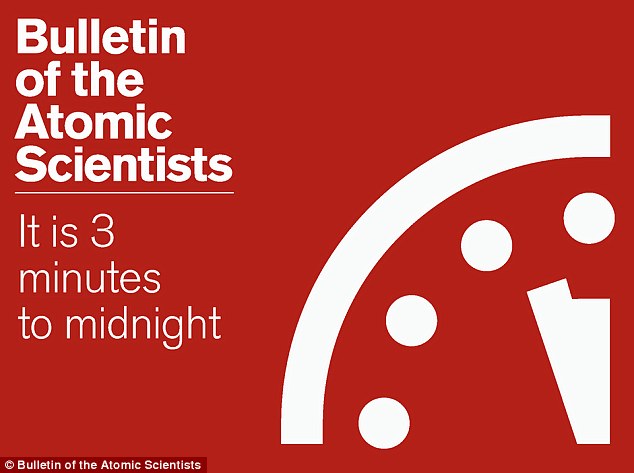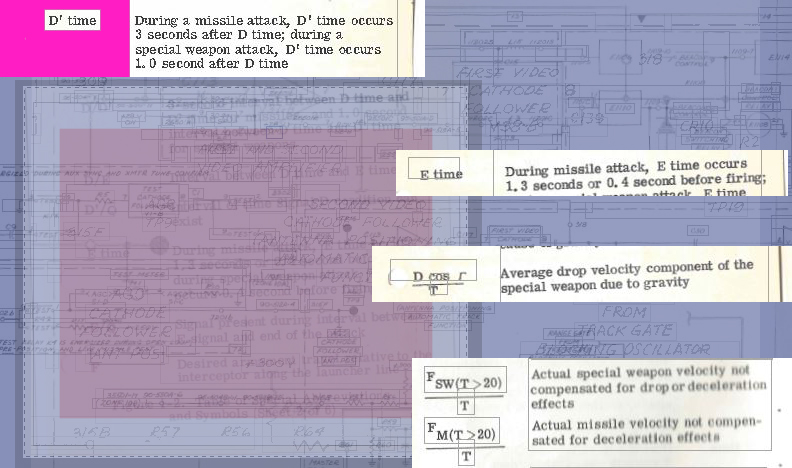We Seek a Society with Equity and Justice for All.
We Seek a Community Where Every Person's Potential May Be Fulfilled.
We Seek an Earth Restored.
Friends Committee on National Legislation |
| |
We Seek a Society with Equity and Justice for All. We Seek a Community Where Every Person's Potential May Be Fulfilled. We Seek an Earth Restored. |
Take ActionThe FCNL website provides all the resources you need to research the issues and to contact your members of Congress, by email, phone or by letter. (It's Easy) |
Nuclear WeaponsA World Free of Nuclear WeaponsThe Nuclear CalendarSept. 30-Oct. 6 -- The screening of the Movie Command and Control. A free online course from Stanford University Living at the Nuclear Brink: An Introduction by Dr. William J. Perry "I have been living at the nuclear brink for all of my adult life, and throughout my career in academia, private industry, and the U.S. government, I have dealt first-hand with the evolving nuclear threat. Nuclear weapons may seem like 20th century history, but the choices we make about these weapons in the 21st century will decide your future in truly fundamental ways. Because most people do not understand just how serious these dangers are today, their governments are not taking adequate preventive actions: actions that are readily achievable. And so, we are drifting towards a nuclear catastrophe. This is why I have dedicated the balance of my life to educate the public about these dangers, and this is the reason I have created this course. I have been joined in this effort by an outstanding and uniquely qualified group of educators and public servants who share my concerns about nuclear weapons." |
Nuclear Winter"The climate models in the public domain suggest that the ignition of 100 firestorms, comparable in intensity to that observed in Hiroshima in 1945, would produce a "small" nuclear winter. The burning of these firestorms would result in the injection of soot (specifically black carbon) into the Earth's stratosphere, producing an anti-greenhouse effect that lowers the Earth's surface temperature. The models conclude that the cumulative products of 100 of these firestorms would unmistakably cool the global climate by approximately 1 °C (1.8 °F), largely eliminating the magnitude of anthropogenic global warming for two to three years. The authors speculate, but do not model, that this would have global agricultural losses as a consequence." |
The Doomsday Clock The Bulletin has been a reliable source of information concerning the dangers of nuclear weapons for nearly as long as such weapons have existed. Their website contains a wealth of information that is at times depressing. the research article, Putin: The one-man show the West doesn’t understand, demonstrates the breadth of the material on the website. The nuclear Google provides a list of Google searches to "for citizens and journalists to school themselves before the 2016 US presidential elections." |
Military /Warnings of Uncontrollable Escalation /Accidental Nuclear War These are the first two quotations in a 45-page compilation from similar statements of world leaders and nuclear experts, from the earliest days of the Atomic Age through 2002. |
Attack GeometryFor five months we studied the basics of electronics, then we turned to the weapons system that we would be working on. The MG-13 FIRE CONTROL SYSTEM (F-101B ACFT) manufactured by Hughes Aircraft and made airborne by the F-101B 'Voodoo' fighter interceptor, a McDonnell aircraft that carried two infrared missiles and two atomic rockets. The mission of the Voodoo fighter was to intercept and shoot down attacking bombers, most likely of Soviet origin. We were taught how the MG-13 integrates aircraft, radar and computers to detect, track and shoot down incoming aircraft. This is where we were introduced to Attack Geometry. We drew pictures in two-dimension of what was happening in three; the fourth, and critical, dimension was time. We wrote formulas with Greek letters. Delta Δ was used to mean difference, Δ t (difference in time) was subtracted as a countdown to launch function. Like an hourglass time runs out one Δ t at a time.  ("special weapon" = an atomic weapon.)In 1961 I was stationed at Hamilton AFB in Marin County California, just north of San Francisco. In 1955 I had lived on a Kansas farm, without electricity or running water; now I was working on the radar and computers of a plane that carried nuclear weapons. I found being in military service to be psychologically oppressive, though I was treated well by my superiors and enjoyed my work. Marin County and San Francisco were a new and exciting world for exploration. The Cuban Missile Crisis
|
Cold War Nuclear Theory |
FCNL Annual Meeting 2016SPIRIT LED ACTION IN 2017
Where will you be two days after the November elections? In an election season where insults, vitriol, and polarization feed the media, the FCNL community engages with a listening ear and an inquisitive heart. Although this practice may be challenging in 2016, our Quaker faith gives us the courage to #LoveThyNeighbor. The results of our nonpartisan advocacy in the public interest help move us toward the world we seek. Join hundreds of Quakers and friends from around the country in Washington, DC for four days of advocacy, conversation, and worship. In a critical moment of transition for our federal government, our time together in community and discernment opens us to the “fresh incursion of the Spirit.” We’ll lobby together; we’ll learn what Friends across the country ask of us; we’ll lean in to the possibilities for our persistent, prophetic, and powerful advocacy. All are welcome. BRINGING SENTENCING REFORM TO THE FINISH LINE
Our Annual Meeting will kick off a month long lobbying effort to make sure bi-partisan sentencing reform legislation is passed by Congress and sent to the president. On November 10, we will go into Congressional offices in Washington to urge lawmakers to #UnlockJustice. We will ask congressional offices to support legislation to reduce several lengthy mandatory minimum sentences, give judges more discretion, and lower the population in federal prisons. You can see exactly what we will be asking of Senate members here. We'll also request meetings with members of Congress in their home state or district on December 10 to make sure Congress finishes the job in 2016. November 10-13, 2016 in Washington, DC Contribute to FCNL.
|
About this Web PageThe program originates with the London Grove Peace & Social Justice Committee, which has long been involvement with FCNL and its activities. This page is connected to the Helen Corson Website and is hoped to be some addition to the achievements of Helen, some 50 years ago. As the author/editor of this webpage I take responsibility for the errors that I'm sure are it contains. Please use the following link to point out errors, to suggest additions or to make other comments. With Hope for Peace, David Watkins |
| O V E T H Y N E I G H B O R (NO EXCEPTIONS) ♥ LOVETHYNEIGHBOR (NO EXCEPTIONS) ♥ LOVETHYNEIGHBOR (NO EXCEPTIONS)♥ LOVETHYNEIGHBOR (NO EXCEPTIONS) ♥ LOVETHYNEIGHBOR (NO EXCEPTIONS) ♥LOVETHYNEIGHBOR (NO EXCEPTIONS) ♥ LOVETHYNEIGHBOR (NO EXCEPTIONS)♥ LOVETHYNEIGHBOR (NO EXCEPTIONS) ♥ LOVETHYNEIGHBOR (NO EXCEPTIONS) ♥LOVETHYNEIGHBOR (NO EXCEPTIONS) ♥ LOVETHYNEIGHBOR (NO EXCEPTIONS)♥ LOVETHYNEIGHBOR (NO EXCEPTIONS) ♥ LOVETHYNEIGHBOR (NO EXCEPTIONS) ♥LOVETHYNEIGHBOR (NO EXCEPTIONS) ♥ LOVETHYNEIGHBOR (NO EXCEPTIONS)♥ LOVETHYNEIGHBOR (NO EXCEPTIONS) ♥ LOVETHYNEIGHBOR (NO EXCEPTIONS) ♥LOVETHYNEIGHBOR (NO EXCEPTIONS) ♥ LOVETHYNEIGHBOR (NO EXCEPTIONS)♥ LOVETHYNEIGHBOR (NO EXCEPTIONS) ♥ LOVETHYNEIGHBOR (NO EXCEPTIONS) ♥LOVETHYNEIGHBOR (NO EXCEPTIONS) ♥ LOVETHYNEIGHBOR (NO EXCEPTIONS)♥ LOVETHYNEIGHBOR (NO EXCEPTIONS) ♥ LOVETHYNEIGHBOR (NO EXCEPTIONS) ♥ |